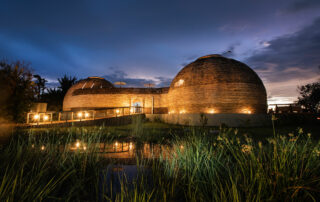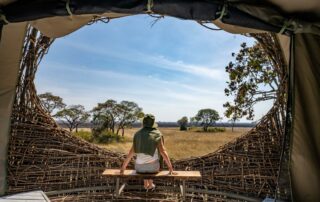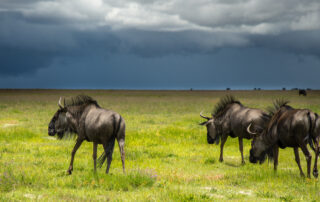SIMALAHA COMMUNITY CONSERVANCY

Meaning ‘come together’, Simalaha is an apt name for the community conservancy inspired and driven by the Sesheke and Sekhute chiefdoms. Bordering the Zambezi River on the Zambezi-Chobe floodplain, Simalaha is where wildlife and people come together and co-exist under one sky as they once did many years ago.
The vision of the Sesheke and Sekhute chiefs to rehabilitate and conserve the region has become a reality through a partnership with Peace Parks Foundation. The development of this wildlife conservancy and the implementation of viable natural resource management have been key in uplifting local communities, creating income-generating opportunities through nature-based economies and tourism opportunities.
Simalaha forms part of the world’s largest trans-frontier conservation area, the Kavango Zambezi Transformation Conservancy Area (KAZA) that spans five countries and 520 000km² / 323 113mi². The conservancy is fundamental to re-establishing wildlife populations and their migration routes through KAZA.
Wildebeest, zebra, red lechwe, puku, hartebeest, impala, waterbuck, giraffe, buffalo, eland and sable have been re-introduced to the plains. More and more wildlife can start to traverse old migration paths safely and elephants have been seen walking their historical timelines. The days when the flood plains were teeming with wildlife, the forests thick and the people benefiting from this rich environment, are once more slowly being realised.
MORE INFO
- Area: 180 000ha / 444 780ac of which 40 000ha / 9 900ac is a wildlife sanctuary
- Founded: 2012
- Province: Southern Zambia
- Co-ordinates: 17°31’27.3?S 24°57’35.9?E
Simalaha is open to horse safaris. This is a summer rainfall area, with short-lived but dramatic thunderstorms from November to April. May to September sees cooler temperatures, no rain and shorter grass but the heat does build up steeply in October, the hottest and driest month.
A 120km / 75mi drive takes you from Harry Mwanga Nkumbula International Airport in Livingstone to Simalaha.
There are no major predators in Simalaha but plains game and grazers are well represented.
Some notables to look out for are collared palm thrush, Dickinson’s kestrel and western banded snake eagle. Common species include spurwings, Egyptian geese and sacred and glossy ibises.
LATEST NEWS
Major Updates at Kafue Lodge After Tragic Fire
A devastating fire in 2023 proved to be the catalyst for a fresh start and an exciting new chapter at Ila Safari Lodge in Kafue National Park. After the heart-breaking destruction of the old boma and some communal areas, the [...]
Iconic Kafue ‘Nest’ Camp Opening Early
Chisa Busanga, arguably one of the most unusual camps in Zambia, will be opening on 1 May 2024 rather than 1 June thanks to favourable conditions in Kafue National Park. With more drier ground available earlier than usual, guests will [...]
Date for 2024 KafueWild Trail Run Announced
Trail runners should mark Saturday 21 September on their calendars as the day to be at the starting line of the KafueWild race in Kafue National Park. A joint effort between the Department of National Parks and Wildlife, African Parks, [...]
Liuwa Plain Opens Early
Drier than usual conditions owing to less summer rain have one positive consequence: Liuwa Plain National Park has opened on 1 March 2024 rather than closer to autumn as is more usual. Situated to the far west of the country [...]




